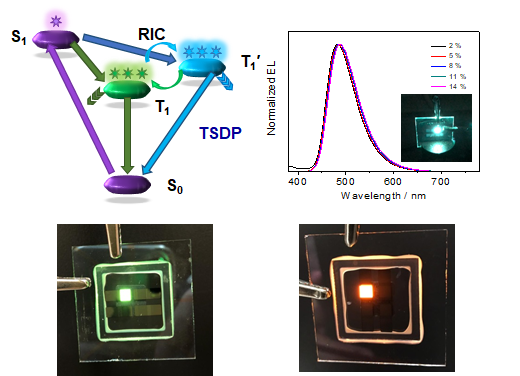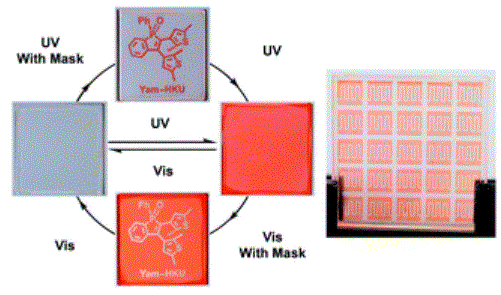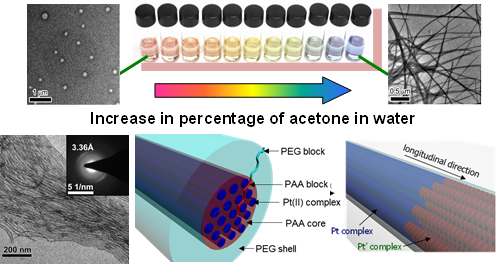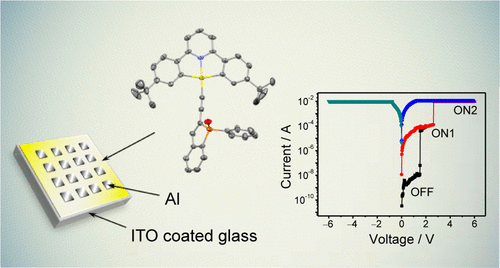Research
The major focus of our research is on the molecular design and synthesis of novel inorganic/organometallic metal complexes that may find potential applications as functional metal-based molecular materials. Of particular interest are luminescent polynuclear metal complexes that show weak metal-metal interactions and luminescent metal complex and supramolecular systems of charge-transfer excited states, with d6, d8 or d10 metal centres, in particular those containing alkynyl, chalcogenido, chalcogenolato, pnictogenido and polypyridyl ligands. Through the systematic study of the electronic spectroscopy of the newly synthesized metal complex systems, a fundamental understanding of the spectroscopic and luminescence origin as well as the structure-property relationship of these complexes could be established. Apart from their fundamental spectroscopic, mechanistic, electrochemical, photoluminescence (PL), and photochemical studies, attempts will be made to explore their potential applications as functional molecular materials in the following areas:
Optoelectronic Materials
The exploration of triplet emitters for electroluminescence (EL) applications has attracted immense interest. The project involves the design and synthesis of novel metal-based molecular triplet emitters as the emissive layer for the fabrication of high-efficiency organic light-emitting diodes (OLEDs). The emission colours could be readily tuned through a systematic variation of the nature of the metal centre and its ancillary ligands. Molecular materials for other optoelectronic applications will also be explored. |  |

Spectrochemical and Luminescence Chemosensors and Biolabels
The project involves the design and synthesis of luminescent metal complexes capable of showing selective binding and molecular recognition properties to substrates of environmental and biological interests, such as ions, volatile organic compounds (VOCs), oxygen, gases and vapours, solvents, DNA and proteins, which could be accomplished through the incorporation of various functional ligands such as those containing macrocycles and calixarene-type receptor sites. Extension of the work will also be made to design molecular materials as probes for changes in temperature and the microenvironment. |
 |

Photochromic and Photoswitching Materials
The project involves the design and synthesis of metal complexes capable of exhibiting photochromic and photoswitching behaviour via photoinduced trans-cis isomerization or ring-opening/closing processes, which may find applications in optical switches, memory and storage. Intramolecular sensitization of the photochromic and photoswitching moieties by the metal complex chromophore will be explored. |  |

Supramolecular Assemblies and Organogels
The project involves the design and synthesis of supramolecular assemblies and organogels through the control and utilization of various non-covalent interactions. Incorporation of metal-ligand chromophores into these assemblies and organogels will be made to produce stimuli-responsive materials with interesting optical and luminescence behaviour. |  |

Molecular Electronics and Resistive Memories
The project involves the study of the electronic communication between metal centres across alkynyl bridges of our newly synthesized luminescent carbon-rich rigid-rod and hyperbranched metal alkynyl systems and their possible utilization as building blocks for molecular wires and junctions based on the intriguing electron delocalization properties and the molecular rigidity of the alkynyl unit. The exploration of small-molecule organometallic compounds for resistive memory application and the fine-tuning of their multilevel memory behaviour will also be made. |  |

Nanoclusters and Nanomaterials
The project involves the design and synthesis of metal chalcogenido, chalcogenolato, and pnictogenido clusters of various nuclearity and the study of their optical properties. The exploitation of these clusters as single-source molecular precursors for the synthesis of nanoparticles that may have interesting semiconducting and optical properties will be made. The controlled template-directed synthesis of nanomaterials will also be made. |  |













